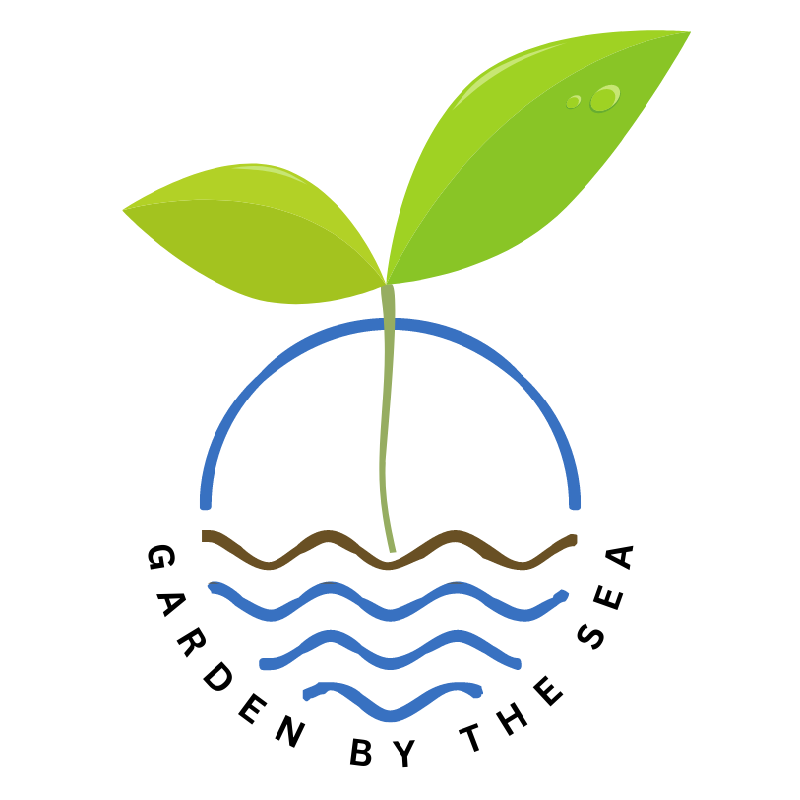The Cool, Wet, Marine Climate of Ocean Shores:
A tiny city, Ocean Shores is only 6 miles long and 2 miles wide. Our general maritime climate is cool, wet, and windy, but along our little peninsula there are enough micro-climate and soil differences that one plant might grow well in one area and not at all only a mile or two away.
Our general hardiness is classed as zone 9 (zone 5 using Sunset’s system) making us on par with Southern California, most of Florida and the Gulf Coast. I do not think so! Look at our “palm trees.” Look closely. They are not the same as those you will find in southern “zone 9” places. Back in the day, when Ocean Shores developers were trying to create a Beach Resort, they wanted palm trees. So, they imported some……which did not live long. It just does not get warm enough.
But they did find a kind of false palm, which mostly is what you see today. These are from the Cordyline family, related to Agave and Yucca. There are several species, most of which do not grow “trunks,” so be careful if you want a palm-look. These do quite well in our cold, very wet and windy winters, and our cool dry summers. (PS: Chinese Wind Palms, Trachycarpus fortunei, which are real palms and weren’t one of the initial ones tried, do survive here.)
Ok, so back to hardiness regions. Ocean Shores is classed as a zone 9, because the ground rarely freezes. That will give you an idea of which plants can get through our winters. But most zone 9 areas get much warmer in the spring and summer than we ever do. Our average highs rarely crack 70, although our record highs surprise even some longtime residents. (At the end of this article is some climate data I gathered from weather.com.) This means that typical zone 9 plants generally need much warmer temps in the spring and summer than they will ever see here.
And the other problem with a lot of zone 9 plants is that they are not happy with the amount of rain we get here in the fall, winter, and spring. Look at the last cell in the chart below. We average 75 or so inches of rain a year. That is twice what Seattle gets. Even though our soil is mostly sand which drains quickly, you might have noticed standing patches of water. That is because our water table is pretty high. In some places we are nearly floating! (Many of the deer resistant spring bulbs I planted last fall in my “perfectly drained” flower garden rotted because of water that was not supposed to be standing there.)
This data is mushed together from records from the entire city. Our mini-climate zones are quite different from each other. Soil differences parallel the climate zones too. Sea-side is colder, has more wind and sandier soil than the bay-side. jetty-side is colder, much windier with saltier and sandier soil than city-side. Some say there are more deer problems out at the Jetty, which I noticed from trying to plant out there, but I do not have any real data.
Gardening is rather tricky at Ocean Shores. Remember the Master Gardener maxim of, “Right Plant, Right Place.” It is all about understanding where your garden is and what its micro-climate and soil are like. Major factors to consider are:
- Ocean Shores has a cool, wet, windy, maritime climate, with short days and lots of rain in the winter and fall. The best time is July and August, with long, extra dry days, which will need lots of extra water.
- Consider where you live on the peninsula. The bay-side, closer to town will be the easiest because it is warmer, less windy and has better soil. The closer you are to the sea-side the more you need to account for cooler temps, generally more wind, and sandier soil, which you will need to add compost and nutrients to. If you are out at the jetty, just give up and see about renting a plot in the community garden at GBTS.
- The deer problem, which I keep returning to in this column, is semi-solved either with fences or careful deer resistant plant selection combined with experimentation.
months | jan | feb | mar | apr | may | jun | jul | aug | sep | oct | nov | dec | year |
Rec Hi | 68 | 76 | 81 | 85 | 93 | 94 | 96 | 94 | 92 | 85 | 69 | 64 | 96 |
Ave Hi | 49 | 51 | 54 | 56 | 60 | 63 | 66 | 67 | 67 | 60 | 53 | 48 | 58 |
Ave Lo | 38 | 37 | 39 | 41 | 46 | 49 | 52 | 52 | 49 | 44 | 40 | 36 | 44 |
Rec Lo | 11 | 9 | 22 | 26 | 27 | 33 | 32 | 35 | 30 | 24 | 12 | 7 | 7 |
AveRain | 11.10 | 8.18 | 8.08 | 5.73 | 3.60 | 2.57 | 1.36 | 1.64 | 2.57 | 7.56 | 12.09 | 10.79 | 75.27 |
This article was originally printed in The Ocean Observer, April 2019.



